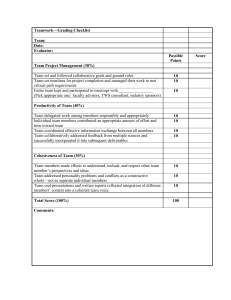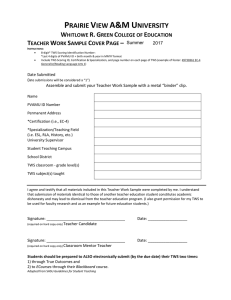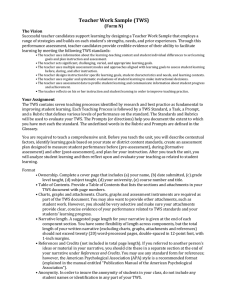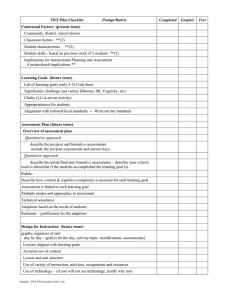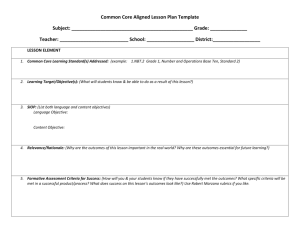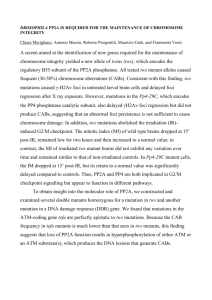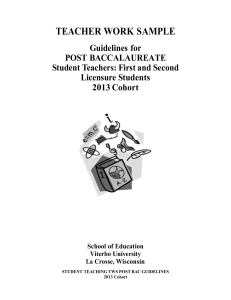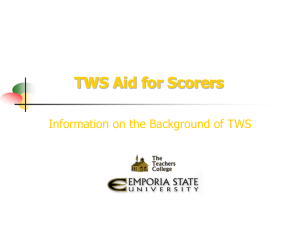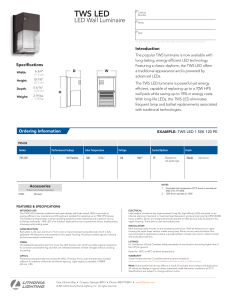Assessing Student Performance
advertisement
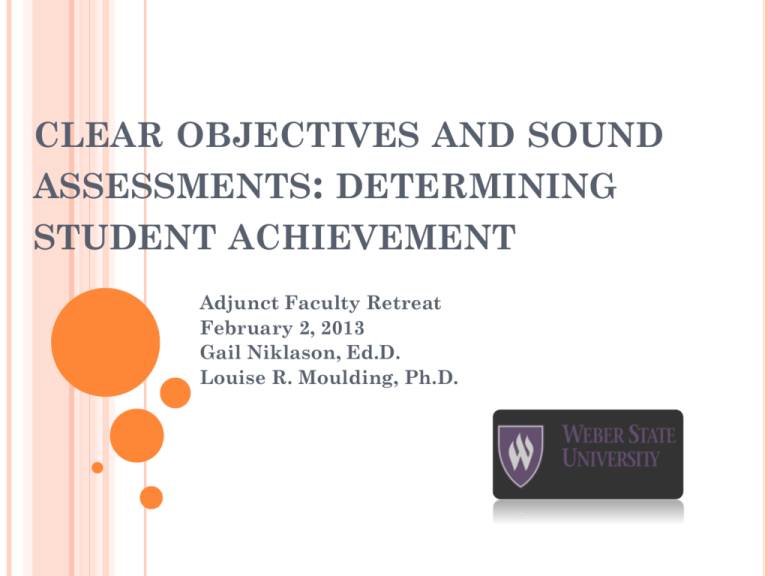
CLEAR OBJECTIVES AND SOUND ASSESSMENTS: DETERMINING STUDENT ACHIEVEMENT Adjunct Faculty Retreat February 2, 2013 Gail Niklason, Ed.D. Louise R. Moulding, Ph.D. OBJECTIVES Do Describe student actions – what do you want students to know or be able to do? Contain a verb that accurately represents student action Specify content Do not describe what you are going to do, produce, or present SAMPLES Students who successfully complete this course should learn the following: Conceptual understandings of physics in the areas of electricity, magnetism, optics, and modern physics. Students will acquire… Knowledge regarding the influence of the family, culture, school and other social systems on the growth and development of the child. MORE SAMPLES Describe appropriate emergency procedures in a variety of exercise settings. Find, access, use and cite library and internet information. Demonstrate an understanding of current theories of second-language acquisition research. TAXONOMY OF OBJECTIVES Remember memorizing; recognizing; recalling identification and recall of information Who, what, when, where, how ...? Describe Understand (Comprehend) interpreting; translating from one medium to another; describing in one's own words; organization and selection of facts and ideas Retell... TAXONOMY OF OBJECTIVES Apply problem solving; applying information to produce some result; use of facts, rules and principles How is...an example of...? How is...related to...? Why is...significant? TAXONOMY OF OBJECTIVES Analyze subdividing something to show how it is put together; finding the underlying structure of a communication; identifying motives; separation of a whole into component parts Classify...according to... Outline/diagram... How does...compare/contrast with...? What evidence can you list for...? TAXONOMY OF OBJECTIVES Evaluate making value decisions about issues; resolving controversies or differences of opinion; development of opinions, judgments or decisions Do you agree...? Why? What is the most important...? How would you decide about...? What criteria would you use to assess...? Create creating a unique, original product that may be in verbal form or may be a physical object; combination of ideas to form a new whole What would you predict/infer from...? How would you create/design a new...? What might happen if you combined...? What solutions would you suggest for...? OBJECTIVE TABLE FOR REVISED TAXONOMY Factual Remember Understand Apply Analyze Evaluate Create Procedural Conceptual Metacognitive ALIGNMENT OF OBJECTIVES TO ASSESSMENT Bloom’s taxonomy and its revision by Anderson & Krathwohl provide guidance to the type of assessment items used by objective. Simple objectives are best assessed with selected response. Complex objectives, those requiring analysis of concepts, are best assessed with constructed response or products/projects. ALIGNING OBJECTIVE TYPE WITH ASSESSMENT TYPE Factual Remembering Procedural Conceptual Metacognitive Selected Response Constructed Response Constructed Response Projects Understanding Applying Analyzing Evaluating Creating UPTS Standard 2: Plan curriculum and design instruction to enhance student learning Course Objective 1. Design and articulate instruction based on the Utah Core Curriculum standards 2. Select instructional goals based on student achievement data and knowledge of students 3. Use research-based instructional Standard 3: Engage and support all strategies to enhance student learning of students in learning content 4. Reflect on teaching and learning Evidence TWS Objectives TWS Contextual Factors Lesson Plans TWS Design for Instruction TWS Instructional DecisionMaking TWS Reflection Standard 4: Assess and evaluate student learning Standard 5: Demonstrate professionalism 5. Assess learning goals based on Utah Core Curriculum standards 6. Use multiple sources of formal and information assessment to verify student learning 7. Communicate feedback on learning progress to students and parents/guardians 8. Maintain professional demeanor and appearance Unpacking the Standards Unit Overview Alignment Assignment Summative Assessment Rubric TWS Assessment Plan TWS Analysis of Student Learning Attendance Peer Teaching Disclosure Statement PURPOSE OF ASSESSMENT Formative Formative informs Provides information to both the teacher and the student about progress toward objectives Summative Content is expected to be mastered Results are for decision-making about student achievement TYPE OF ASSESSMENT Norm Referenced Student performance is compared to others Purpose is to rank and sort students Someone will get an A and someone will fail Criterion Referenced Student performance is compared to criteria Purpose is to determine if student is proficient Everyone could get an A or everyone could fail

